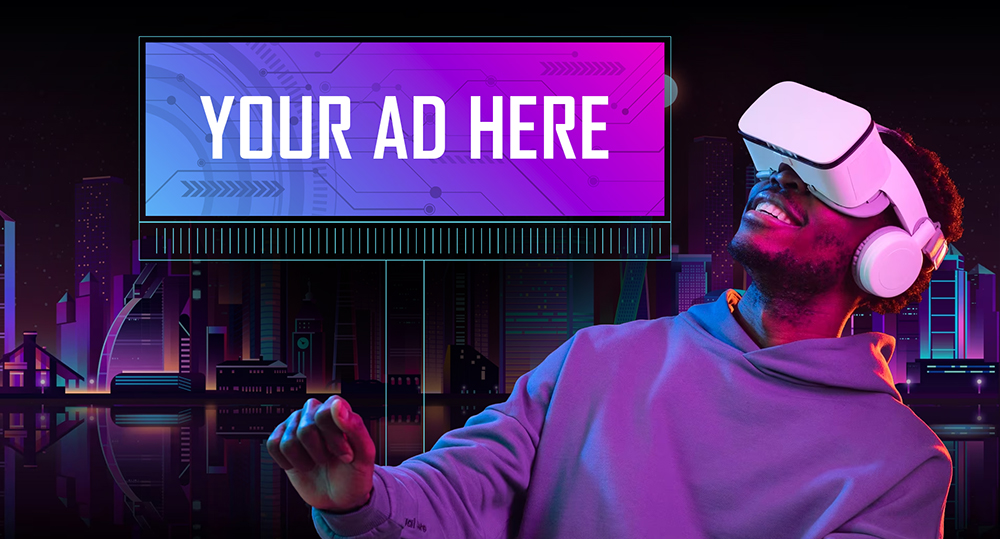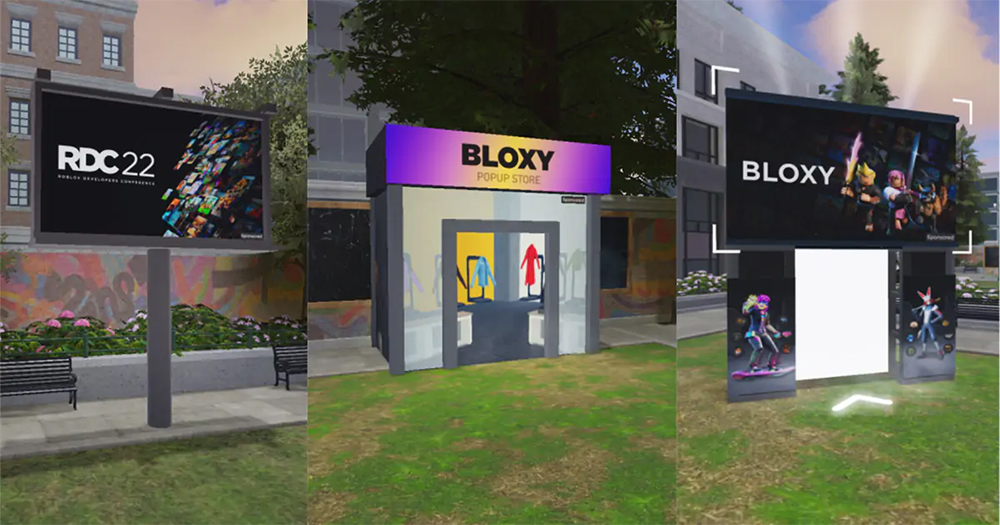Are Billboards In The Metaverse Any Competition For REAL Billboards?

Since the metaverse craze hit a couple of years ago, it’s been full steam ahead with all kinds of new ideas, and theories about how the metaverse works, and how big it will be. What is the metaverse? In short, the metaverse is a series of online worlds that people can visit with the use of VR (virtual reality) or AR (Augmented Reality) headsets.
What can you do in the metaverse? Explore and interact with the virtual space, engage in social activities, play games, attend events, and much more. With people beginning to flock to these metaverses and take part in these activities, it was only a matter of time before ad spaces popped up for sale. Many of these ad spaces are in the form of billboards throughout virtual worlds.
 Image: Robolox/Adweek
Image: Robolox/Adweek
The popular game Roblox has been testing virtual billboards for months now. They have already been selling virtual ad space but have recently begun exploring new immersive ad experiences like the examples above.
Here’s our take on billboards in the metaverse as compared to real billboards…
• According to Bybit, More than half (51%) of global users of metaverse virtual worlds are aged 13 or under. And 83.5% of metaverse virtual worlds users are under 18. Therefore, targeting adults in the metaverse is not going to happen. At least not for a long time.
• There’s no substitute for seeing billboards in real life as compared to digital simulations in the metaverse.
• There are many metaverses, but only one world that we live in. Therefore, advertising on a billboard in one metaverse does not put your ads in all of them. There are some limitations there that advertisers may not like.
• In the metaverse, does the ad space provider know when someone looks at your billboard? There may be some measurement/performance issues there.
It’s no doubt that technology is moving faster than ever, and it is likely that these billboard spaces in the metaverse will eventually grow and become more popular, especially for technology products. However, it’s unlikely that smaller businesses will utilize this technology very much, if at all. We don’t see an imminent threat to traditional out of home advertising anytime in the next 20-30 years.
See more articles about the metaverse and OOH here.

